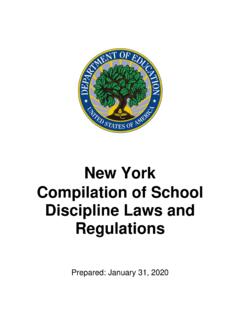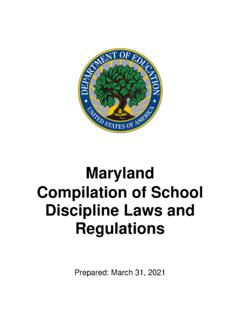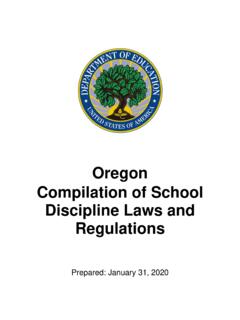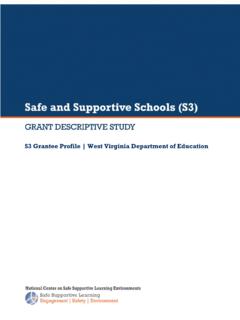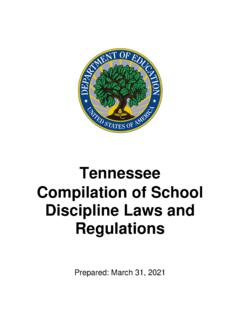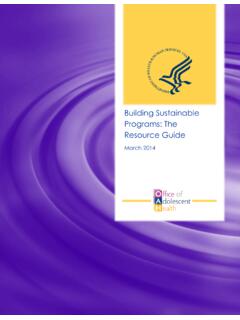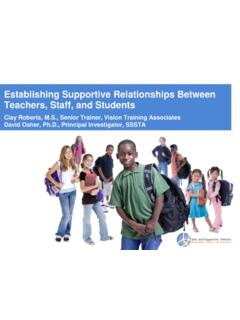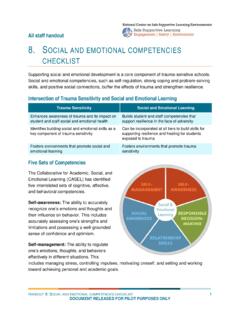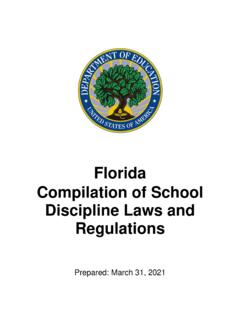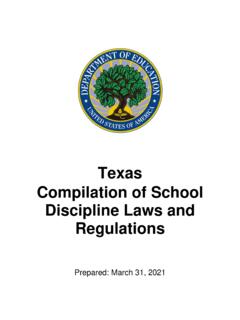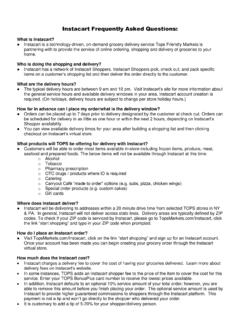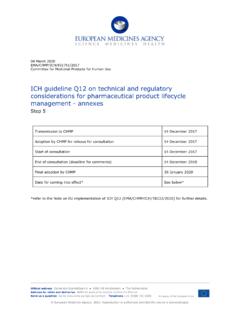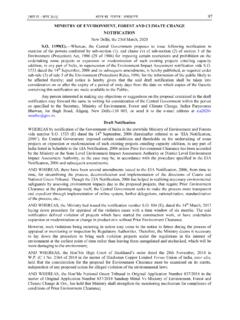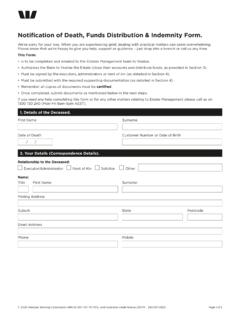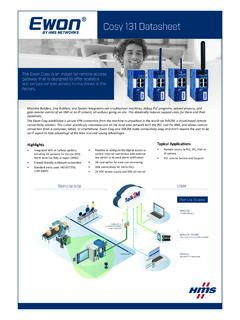Transcription of COMPLYING WITH THE DRUG-FREE SCHOOLS AND …
1 A Guide for University and College AdministratorsHigherEducationCenterfor Alcohol and Other drug Abuseand Violence PreventionEducation Development Center, Chapel StreetNewton, MA 02458-1060[EDGAR Part 86] COMPLYING WITH THE DRUG-FREE SCHOOLS AND CAMPUSES Department of Education[EDGAR Part 86]A Guide for University and College AdministratorsRevised by Beth DeRicco, , CPP-RA publication of the Higher Education Center for Alcohol and Other drug Abuse and Violence PreventionFunded by the Department of EducationComplying With the DRUG-FREE SCHOOLS and Campuses RegulationsiiThis publication was funded by the Office of Safe and DRUG-FREE SCHOOLS at the Department of Education under contract number ED-04-CO-0137 with Education Development Center, Inc.
2 The contracting officer s representative was Richard Lucey, Jr. The content of this publication does not necessarily reflect the views or policies of the Department of Education, nor does the mention of trade names, commercial products or organizations imply endorsement by the government. This publication also contains hyperlinks and URLs for information created and maintained by private organizations. This information is provided for the reader s convenience. The Department of Education is not responsible for controlling or guaranteeing the accuracy, relevance, timeliness, or completeness of this outside information.
3 Further, the inclusion of information or a hyperlink or URL does not reflect the importance of the organization, nor is it intended to endorse any views expressed, or products or services Department of EducationMargaret Spellings Secretary Office of Safe and DRUG-FREE SchoolsDeborah A. Price Assistant Deputy SecretaryFirst printed March 1997 Reprinted July 2006 This publication is in the public domain. Authorization to reproduce it in whole or in part is granted. While permission to reprint this publication is not necessary, the citation should be: Department of Education, Office of Safe and DRUG-FREE SCHOOLS , Higher Education Center for Alcohol and Other drug Abuse and Violence Prevention, COMPLYING With the DRUG-FREE SCHOOLS and Campuses Regulations [EDGAR Part 86]: A Guide for University and College Administrators, Washington, , 2006.
4 To order copies of this publication, write to: The Higher Education Center for Alcohol and Other drug Abuse and Violence Prevention Education Development Center, Inc. 55 Chapel Street Newton, MA 02458-10601-800-676-1730; TDD Relay-Friendly, Dial 711 Fax: 617-928-1537 publication is also available on the following Web site: Department of Education s Higher Education Center for Alcohol and Other drug Abuse and Violence Prevention at by Hemali Patel, Creative Services, EDCiiiContentsAcknowledgments ..ivPurpose of the Guide ..1 Executive Summary ..3 CHAPTER 1. Introduction ..5 Certification Requirements.
5 5 Requirement to Comply With the DRUG-FREE SCHOOLS and Campuses Regulations ..6 Other Legal Requirements ..6 CHAPTER 2. Annual notification ..7 Distribution of the Annual notification ..9 Distribution to Students ..9 Distribution to Employees ..10 CHAPTER 3. The Biennial Review ..13 Content and Format ..13 Reviewing the AOD Prevention Program ..14 Preparing the Biennial Review and Report ..15 Contents of the Biennial Review Report ..15 Measuring Enforcement Consistency ..19 Measuring Policy and Program Effectiveness ..19 Illustrations From Selected Biennial Reviews ..22 Notes ..25 Resources ..29 Appendices.
6 31 Appendix 1: EDGAR Part 86 Contents and Subparts A General, B, and D ..32 Appendix 2: Part 86 Compliance Checklist ..42 Appendix 3: Federal Trafficking Penalties ..45 Appendix 4: University of Georgia: Policy on Alcohol and Other Drugs ..46 Appendix 5: Strategic Objectives and Tactics Focused on Environmental Change ..47 Appendix 6: Supplemental Checklist ..50ivAcknowledgmentsWe wish to thank the individuals listed below for reviewing draft manuscripts of this publication. We appreciate the comments they provided to help us assure that this publication has a solid scientific foundation and contains clear messages.
7 To the extent that we achieved that goal, the credit is theirs. To the extent we did not, the fault is Barnes, University of Northern IowaDiane Berty, Austin Peay State University, TennesseeHeather Dunn Carlton, California State University, SacramentoDeb Walker, Northern State University, South DakotaThis version of COMPLYING With the DRUG-FREE SCHOOLS and Campuses Regulations [EDGAR Part 86]: A Guide for University and College Administrators is a revision by Beth DeRicco of the earlier version that was prepared in 1997 by T. Pittayathikhun; R. Ku; D. Rigby; M. Mattsson; and W. , the 2002 report by the National Institute on Alcohol Abuse and Alcoholism (NIAAA), A Call to Action: Changing the Culture of Drinking at Colleges,3 and the 2003 report by the Institute of Medicine (IOM), Reducing Underage Drinking: A Collective Responsibility,4 indicate that compliance with Part 86 will increase the likelihood of success in reducing consequences of heavy episodic and illegal alcohol use.
8 These reports are an important complement to this publication and are especially useful for conducting a biennial review. Reflecting on the NIAAA and IOM reports will help campuses identify gaps in their evidence-based practices and assist in making recommendations for future programmatic efforts a necessary part of every biennial of the GuideThis guide describes the requirements of the 1989 amendments to the DRUG-FREE SCHOOLS and Communities Act (DFSCA), as articulated in the Education Department General Administrative Regulations (EDGAR) Part 86,1 the DRUG-FREE SCHOOLS and Campuses Regulations* and ways in which institutions of higher education (IHEs)
9 Have met these requirements. Part 86 pertains to drug and Alcohol Abuse Prevention. This guide is designed to support personnel responsible for preventing the illegal use of alcohol and other drugs (AOD) on campus, especially staff designated as AOD prevention coordinators and those in student affairs, residential life, health services, and campus security. Senior administrators, including presidents, deans, and legal counsel, also may find this guide a valuable resource. The purpose and goals of the DFSCA are not new ideas for the nation s IHEs. Recognizing the serious effects of AOD abuse on the academic performance and, more generally, on the well-being of their students, many IHEs adopted prevention measures well before the passage of the DRUG-FREE SCHOOLS and Communities Act.
10 In the years since compliance with Part 86 became mandatory,2 IHEs have gained significant experience designing, developing, and implementing AOD prevention programs. An important aspect of the DFSCA is the requirement that campuses closely examine their prevention program on a biennial basis. The biennial review is designed to document an IHE s prevention efforts. A review that looks at the scope and effectiveness of a campus prevention program is critical to creating a comprehensive effort and COMPLYING with the regulations. COMPLYING with the spirit and not just the letter of the law supports IHEs in their AOD prevention efforts and provides significant benefits and opportunities for the entire institution and its students.
